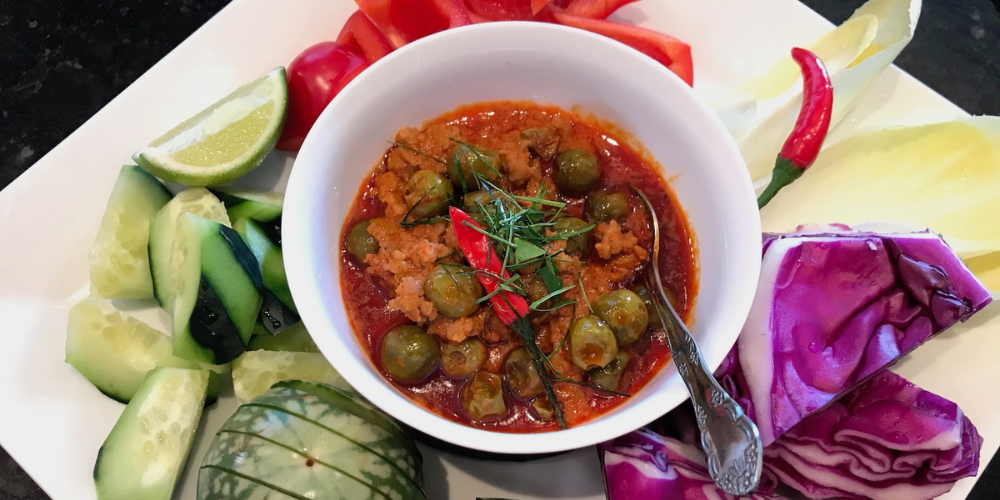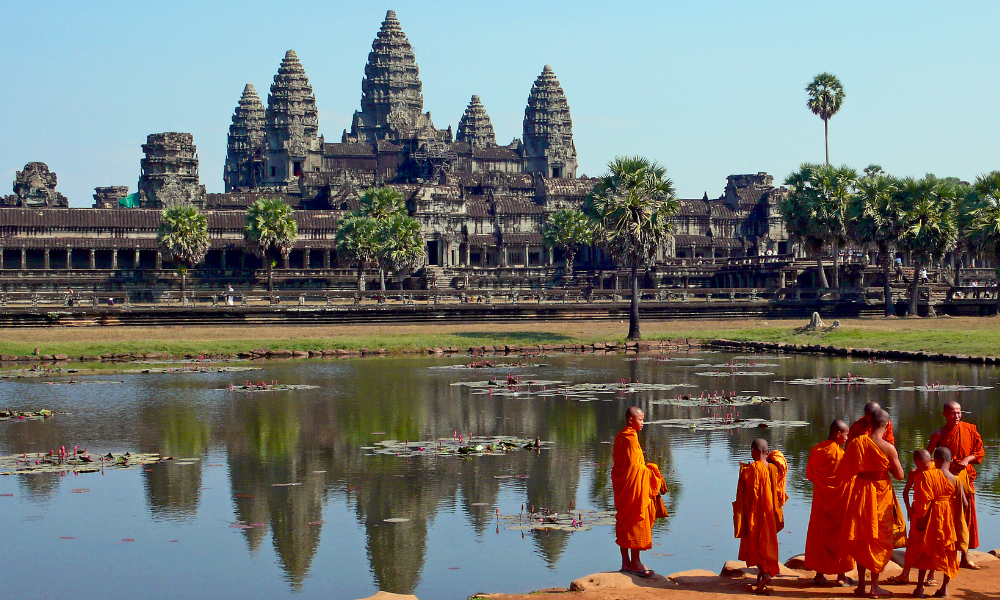
Siem Reap is one of the most famous tourist destinations in Cambodia . Traveling to Siem Reap , you will discover rich cultural heritages and majestic, poetic natural landscapes. This is not only a destination for those who love the history of Cambodia but also a place for those looking for a deep cultural experience.
Best Time to Visit Angkor Wat: Chasing the Sunrise
The ideal time to travel to Siem Reap is usually from November to February every year. During this time, the weather in Siem Reap is cool and dry. With an average temperature of 25 to 30 degrees Celsius. Creating favorable conditions for sightseeing and exploration. This is also the peak tourist season, when many international tourists come to visit the relics of the Khmer Kingdom. Especially the world famous Angkor Wat relic.

Move
Transportation to Siem Reap from Vietnam
To travel to Siem Reap, visitors can choose from many different forms. Depending on their needs and personal finances.
Plane
This is the fastest way to get from Vietnam to Siem Reap. There are airlines such as Vietnam Airlines, Cambodia Angkor Air, Bangkok Air, Singapore Airlines that provide direct flights from major cities such as Hanoi and Ho Chi Minh City to Siem Reap Angkor International Airport (SAI). Besides, if you are in Hanoi, book a flight to Phnom Penh. Then take a ferry, bus or taxi to Siem Reap.
Bus
This is a more economical option than flying. You can take a bus from Ho Chi Minh City or Phnom Penh to Siem Reap. The journey from Ho Chi Minh City usually takes about 12-14 hours, while from Phnom Penh it only takes about 6-7 hours. In Ho Chi Minh City, there are bus companies going to Cambodia such as: Kumho, Sorya, Sapaco and Long Phuong, with a variety of prices and quality.
Private car or rental car
If you are traveling in a group, you can rent a private car or drive from Vietnam to Cambodia. Please note that you will have to go through border checkpoints and comply with immigration procedures.
Getting around Siem Reap
There is no public transportation system in Siem Reap. Therefore, during your time exploring Siem Reap, you can choose to travel by taxi, bicycle, motorbike taxi or tuk tuk for short trips. Most tourists often choose to travel by tuk tuk because it is cheap, cool and safe.
Hotels and resorts in Siem Reap
Amansara Siem Reap Resort
Amansara Siem Reap is located on the edge of Angkor, just 10 minutes from the world-famous temple complex. It is a hidden gem that radiates a fresh light to visitors from the moment they first set foot.
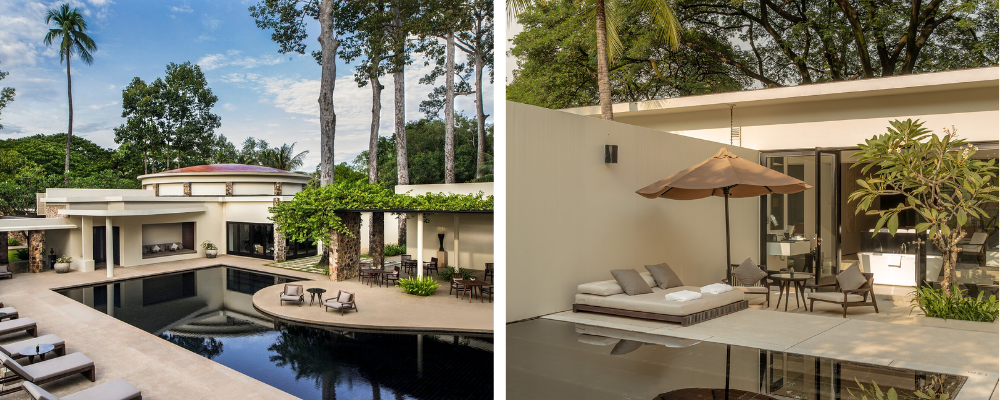
Anantara Angkor Resort & Spa Siem Reap
Anantara Angkor Resort is a luxury all-suite hotel in Siem Reap. It is the closest hotel to the world heritage site of Angkor Wat. Anantara Angkor offers the largest luxury suites in Siem Reap. With exquisite attention to detail, it is ideal for couples as well as families with connecting rooms.

Park Hyatt Siem Reap Hotel
A luxury hotel in the heart of the city, Park Hyatt Siem Reap has been completely reimagined by award-winning designer Bill Bensley to blend Khmer architecture with art deco style.
With 104 modern rooms including 13 elegant and luxurious suites designed with private gardens and/or private plunge pools. All rooms are spacious with full modern amenities. Ensuring all the comforts of the modern world in an ancient land.
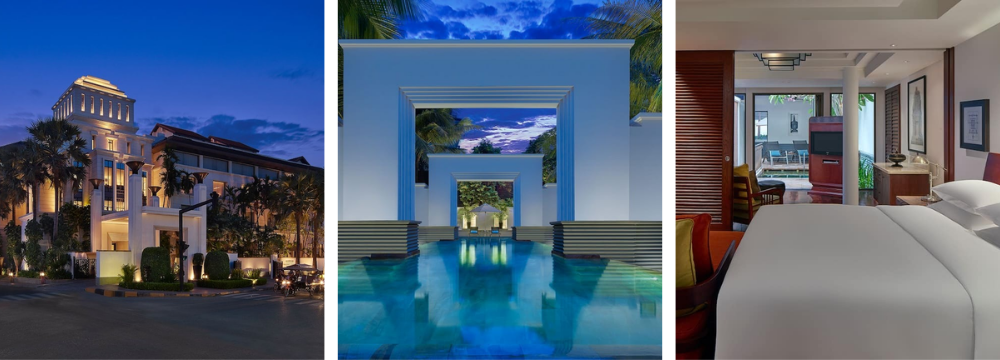
Places to visit in Siem Reap
Angkor Wat

Angkor Wat is a must-see attraction when traveling to Siem Reap . The architecture here is the largest religious monument complex in the world. It bears the mark of the great Khmer civilization. This temple was built by the Khmer king Suryavarman II in the 12th century. It used to be the capital and temple of the Hindu god Vishnu, but was later converted into a Buddhist temple, holding a special religious and cultural role for Cambodia.
The special feature here is the unique architecture with thousands of impressive stacked sandstone blocks. Angkor Wat is recognized by UNESCO as a world heritage site, the pride of the people of this country.
Angkor Thom
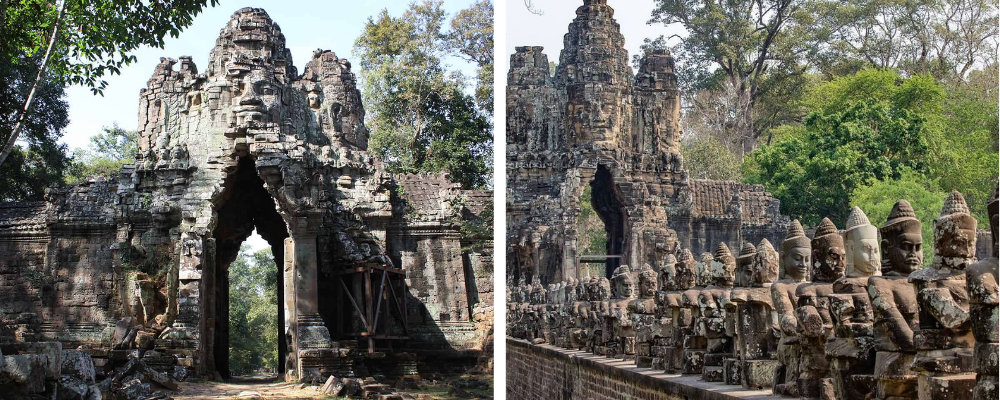
The next tourist destination in Siem Reap that you cannot miss is Angkor Thom Temple. Built by King Jayavarman VII. Angkor Thom was once the powerful capital of the ancient Khmer people and is marked by unique cultural relics no less than Angkor Wat. The most special feature of Angkor Thom is the Bayon Temple relic with 256 mysterious smiling human head statues on 54 towers. Its unique architecture has highlighted the talent of the ancient Khmer people. If you love exploring ancient architecture and historical stories, this will be the ideal destination for you.
Tonle Sap Lake
Tonle Sap Lake is a quite impressive destination for tourists. Coming here, you will sit on boats to watch the daily life of the people. Visit the unique floating fishing village. The idyllic scenery at Tonle Sap Lake will bring visitors a new, comfortable and relaxing experience.
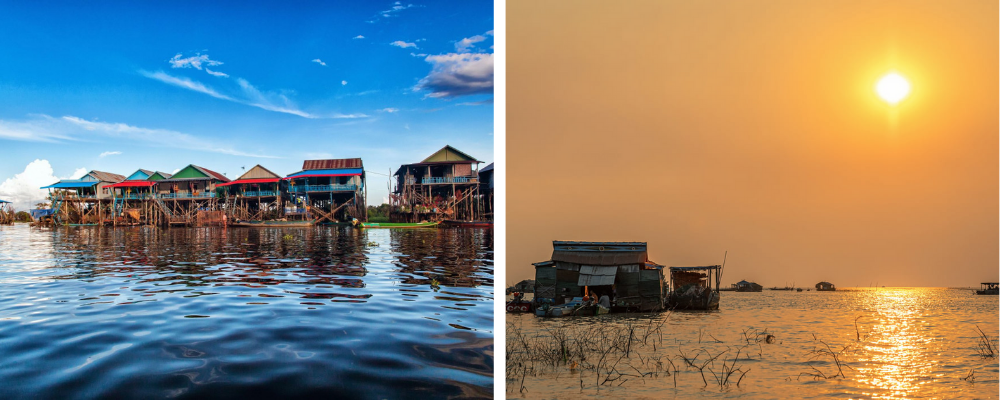
Night market in Siem Reap
The night market is a must-visit place when traveling to Siem Reap. This place will awaken the culinary senses of visitors. You will experience many delicious and attractive dishes, witnessing street chefs performing. In addition, visitors have the opportunity to visit many different unique stalls such as gemstone jewelry, traditional products (scarf). Or places selling items to buy as gifts for friends after the trip.

Kampong Phluk Floating Village
Kampong Phluk Floating Village is located on the Tonle Sap Lake. It attracts tourists with its tall and beautiful houses with impressive structures. This is not only a place where people live but also has a police station, school, etc. All are like a miniature city built on unique wooden floors. This will be a trip where you will meet friendly people and experience a new land with many impressive things.
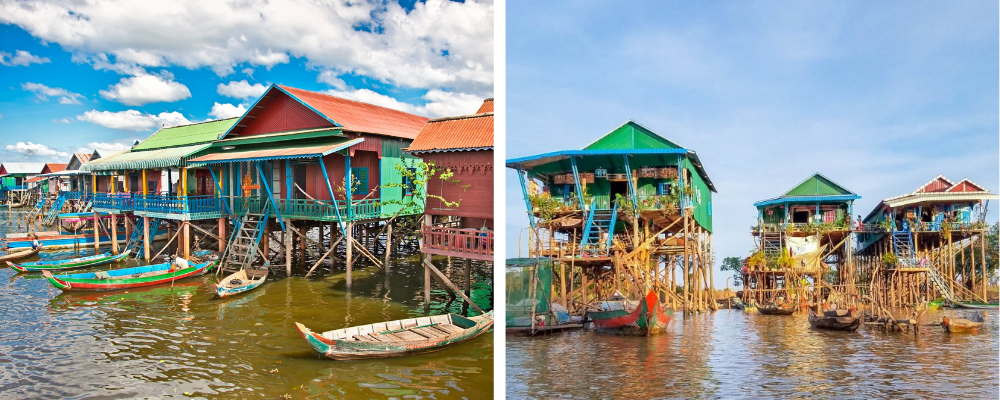
Ta Prohm Temple
Ta Prohm Temple was built in the mid-12th century by King Jayavarman VII. With its impressive architecture, this large structure offers visitors an impressive sightseeing space. Not only is it a historical temple, it is also a masterpiece of nature with a mysterious beauty. The temple is famous for the image of giant Kônia and tung tree roots, which surround the towers and stone walls.
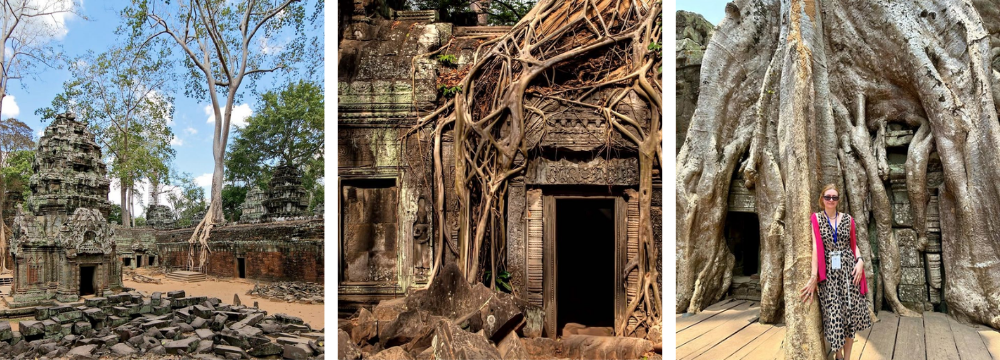
Cambodian Cultural Village
The Cambodian Cultural Village is considered a living museum. It recreates the glorious period of the Khmer Empire. With an area of over 200 square meters, this place is a wonderful combination of museum, exhibition, and temple and pagoda models. You will have the opportunity to admire the heritage of the Khmer Empire. Enjoy unique cultural performances such as Apsara dance, dance art, ...
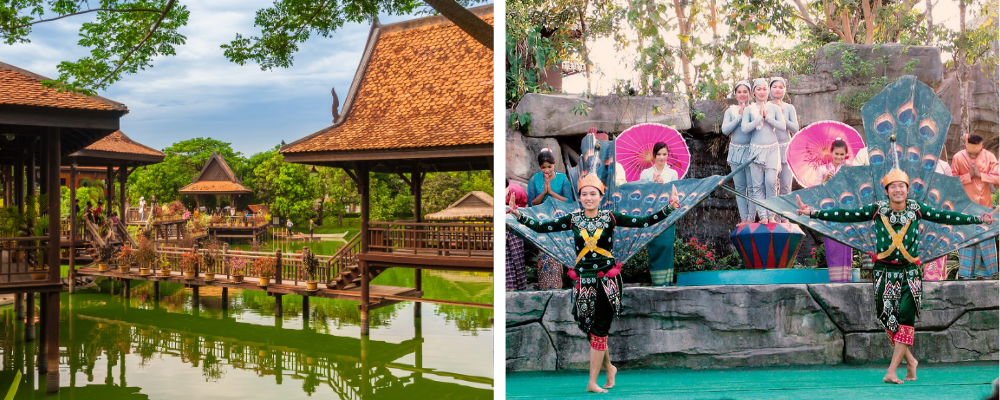
Pub Street
The famous Pub Street attracts many foreign tourists. The atmosphere here is extremely vibrant, full of bars and restaurants, providing a genuine space for entertainment.

Kbal Spean River – 'the river of a thousand Lingas'
The Kbal Spean River is located in Phnom Kulen National Park, Siem Reap Province. The interesting thing about this river is a series of underwater stone carvings depicting Linga, Yoni, and statues of Vishnu, Deva, Brahma, and Apsara. That is why Kbal Spean is often called the “Valley of 1000 Lingas” or “River of a Thousand Lingas”. The Lingas are most visible under the water at the end of the rainy season, when the river water level is low.
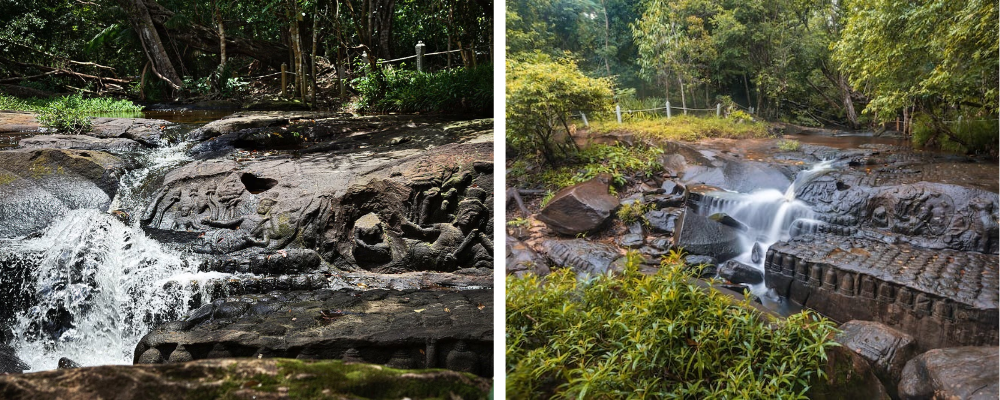
Wat Bo Temple
Wat Bo is one of the first temples built in Siem Reap. This temple has witnessed many changes in Cambodian history and culture. The temple has traditional Cambodian architecture with curved pagoda tops, red tiled roofs and elaborately decorated pillars.
Wat Bo is a famous religious center where monks still live and practice their religion. However, visitors are welcome as long as they follow the temple rules. Those who rise early will have the opportunity to listen to the monks chanting. There is also a school on the temple grounds, so visitors will see some children running around during their downtime there.
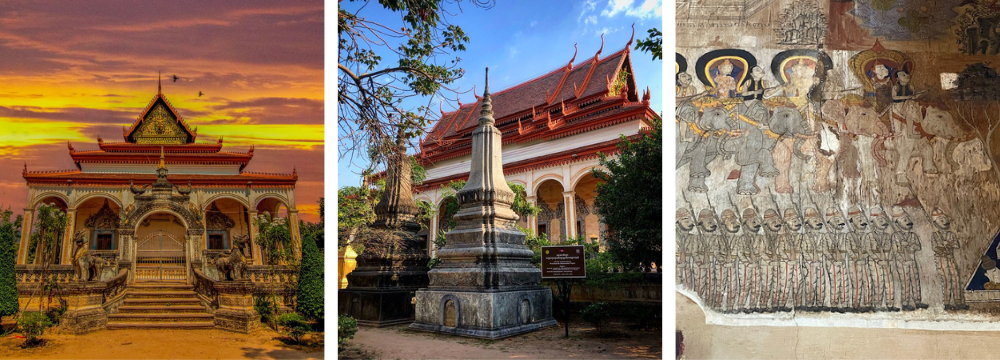
Siem Reap Cuisine
Amok (Amok Trey) – steamed fish
Amok is a traditional fish dish typical of Cambodian cuisine. The main ingredient of Amok is fish, but the fish used here is mainly freshwater fish. The fish will be deboned, chopped and mixed with coconut milk, eggs, fish sauce, palm sugar, chili... In particular, to make Amok more flavorful, Kroeung is indispensable. Cambodia's special sauce is made from turmeric, lemon, shallots and many other typical spices of Cambodian cuisine.

Amok fish is put into a small bowl-like mold made of banana leaves, steamed until cooked. Before serving, Amok will be added with shredded green kaffir lime leaves, red chili and a little white coconut milk on top. Therefore, the fish after steaming looks very eye-catching and strangely attractive. Currently, Amok dish not only uses fish as the main ingredient, but sometimes Cambodians also 'break the mold' of this traditional dish with other ingredients. Such as chicken, beef, pork, tofu... to create a different flavor.
Lap Khmer – Khmer beef salad with lemon
Khmer beef salad with lemongrass consists of thinly sliced beef that has been blanched in boiling water or made rare with lemon juice. Mixed with lemongrass, onion, garlic, fish sauce, basil, mint, long beans and fresh pepper, the beef has a sweet, salty taste and a little spicy from chili slices.
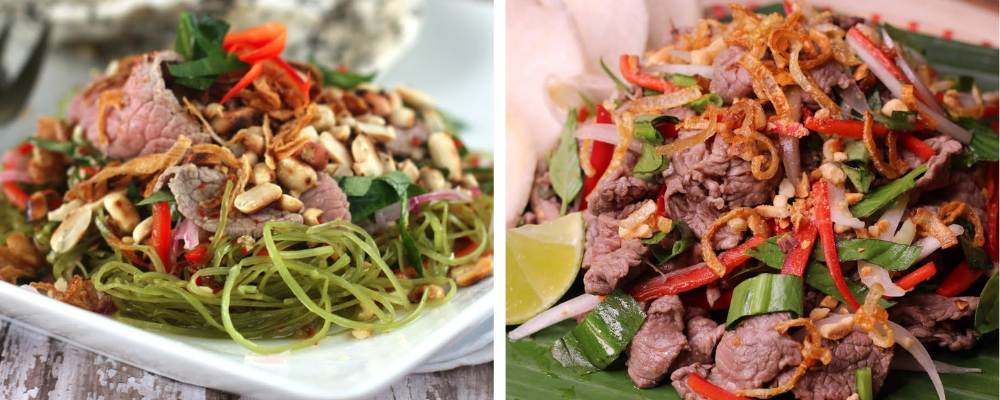
Nom Banh Chok Fish Curry Noodle Soup
Nom Banh Chok is a typical Cambodian breakfast dish. It is often sold by street vendors. It consists of rice noodles, green curry made from fish, mint leaves, lemongrass and is garnished with banana flowers, cucumbers and other greens.

Palm cake
In addition to the basic ingredients of the usual banh bo. Banh bo thot not has two special ingredients: ripe palm fruit and palm sugar. Thanks to these two ingredients, banh bo thot not has a beautiful yellow color, a sweet taste, and an attractive aroma. On the streets of Siem Reap, visitors will easily find this popular dish.
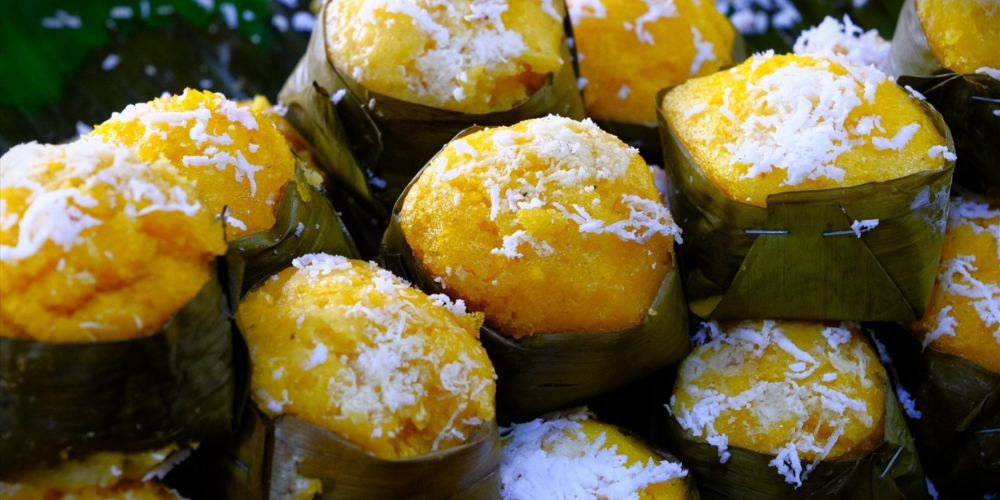
Insect
Cambodians love to use insects to prepare many dishes. From crickets, ant eggs to water bugs, spiders are fried, stir-fried, stuffed with peanuts or steamed with rice, soaked in vinegar, all are very delicious. Among them, dishes made from water bugs. A useful insect that makes dishes more attractive and has a spicy aroma.
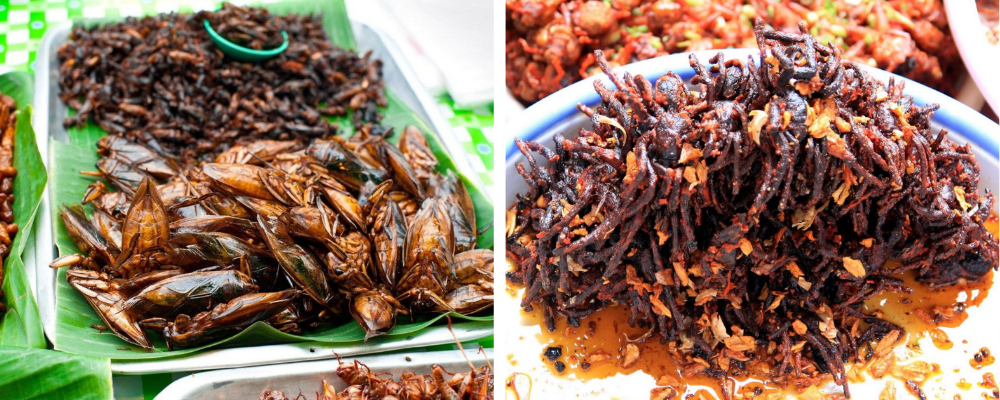
Compared to insect dishes in Thailand and Laos, insect dishes in Cambodia are less diverse. They are mainly crickets and spiders, and insect dishes are not elaborate and have fewer spices.
Prahok fish sauce
Mam bo hoc is made from small fish, linh fish or snakehead fish, because snakehead fish and linh fish have a lot of meat and the meat is very sweet when fermented for a long time. The fish is cleaned thoroughly to remove the fishy smell, the head is cut off and seasoned with garlic, sugar, soy sauce, etc. The fish is dried in the sun for 1 day, washed again and then placed in a jar with rice and salt. Use bamboo strips to tightly seal the jar and ferment for 4 to 6 months. The finished fish sauce will have a dark red color, the fish sauce is thick and fragrant.
Samlor Kako
Samlor Kako is considered one of the national dishes of Cambodia. Samlor Kako consists of green Kroeung, Prahok, roasted rice, catfish, pork or chicken, vegetables, fruits and herbs. In Khmer, “Samlor” means soup, and “Kako” means to mix or stir, so it is a mixed soup cooked with many vegetables according to preference. Usually, this dish is cooked with pumpkin, papaya, green banana, eggplant and long beans. Fish meat is mixed with Prahok, then all the vegetables are put in a pot with boiling water to cook the dish over medium heat.

Prahok Ktis
Cambodia's flavorful Prahok Ktis is served with fresh vegetables and rice. The main ingredients of Prahok Ktis include fermented fish (Prahok), lemongrass paste (Kroeung), coconut milk, palm sugar, and minced pork. The accompanying ingredients soften the spicy Prahok, making it more palatable for even the most demanding diners. Prahok Ktis is served with rice and boiled vegetables or sliced cucumbers.
